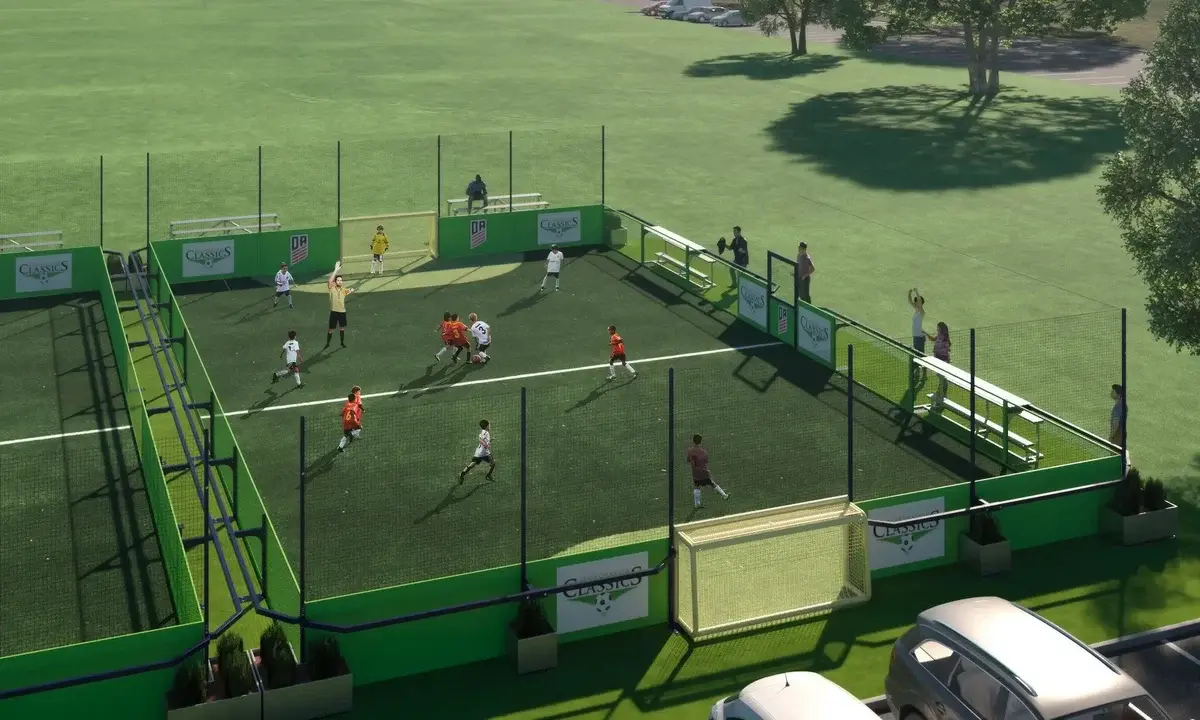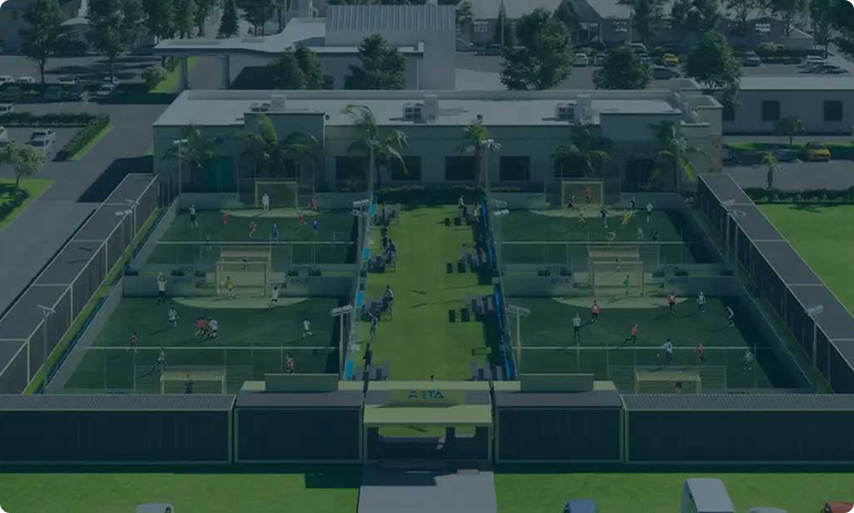BLOG
Soccer Pitch vs. Football Field
Published January 5, 2022 • 2 mins read
.jpg)
Table of Contents
So, you’re considering adding an outdoor sports element to your development or neighborhood and you have narrowed your search to the world’s two most popular sports: American Football, and the internationally known Futbol, aka “soccer”. We’ll look at the differences and similarities between them to help inform your decision.
Proper Terms
First, before we get into the particular differences, let’s define the playing surfaces themselves. Football is played on a “field” while Futbol, or soccer, is played on a “pitch”. But why do they call it a pitch?
While Futbol is widely accepted as the world’s most popular sport, it was not the first sport to use the “pitch.” That honor would belong to the sport of Cricket. Cricket uses wickets, bats, and balls that are “pitched” to the batters. In the 1800s, those playing the game of “Futbol” would use the Cricket pitch when available. When the organizers began using their own dedicated futbol fields, the name “pitch” stuck.
Another term borrowed from Cricket and made popular is “hat-trick,” but that is a story for another time.
Playing Surfaces
Traditionally both sports are played on real grass surfaces. As the game and time have advanced, games are now being played on artificial turf or a hybrid grass/turf surface.
Dimensions of the Pitch
The dimensions of a soccer pitch are defined by the International Football Association Board (IFAB), who are responsible for the laws of soccer. Interestingly, the size of the soccer pitch can vary. The officials call for a field between 100 and 130 yards long and 50 and 100 yards wide. These parameters are different, however, during international play: rules call for a field between 110 and 120 yards long and 70 and 80 yards wide.
Markings on the Pitch
While the playing surface itself can vary, the markings on the pitch must adhere to strict guidelines. The boundary lines around the field must be no more than 5 inches wide. A ball is still considered in the field of play while touching the line. Organizers must divide the field into two halves through a line that runs from touchline to touchline, or the width of the pitch. They must also place a center circle in the middle of the field, or “at mid-field,” where play will begin at kick-off and after a goal is scored. Accompanying this small circle is a larger circle with a radius of 10 yards. Organizers must also include two goal areas, which begin 6 yards outside the goalposts and extends 6 additional yards from the goal line, before joining with a parallel line.
Around the goal area or goalkeeper’s box, there is a penalty area, which penalty goal kicks are taken from. The penalty box extends 18 yards from the goalposts before joining with a parallel line. On top of each penalty box is a “penalty arc” drawn in a 10-yard arc to assure opposing players stay at least 10 yards from the penalty kick taker.
On each corner of the pitch, flags of at least 5-feet tall are planted and corner arcs are painted to mark where corner kicks must be taken from.
Dimensions of a Football Field
The dimensions of a football field are not so much up for interpretation and remain very strict. Every field must have a length of 360 feet, or 120 yards, including 30 feet, or 10 yards, for each end zone. This means that the actual field of play remains 300 feet or 100 yards long. The field must also have a width of 160 feet or 53.33 yards from sideline to sideline.
Markings of a Football Field
Game organizers must mark the entire field with a 6-foot-wide white border, which will act as the out-of-bounds area. When any part of the ball or player touches the white border they are considered “out-of-bounds”. They will also place hash marks, 70 feet, 9 inches from the sidelines to mark every yard of the field.
A goal-line must extend from sideline to sideline and must include a small marker, called a pylon, to mark this area at the corners of each goal line entering the endzone. The center of the field is marked by the “50-yard line” at midfield. Each subsequent 10 yards from midfield to each endzone is also marked in large painted numbers by the corresponding yards before the goal-line (ex. 40, 30, 20, 10).
Goalpost Differences
The last and likely most noticeable difference between the two games is their unique goalposts. Obviously, in American Football the goalposts are extended high in the air - 35 feet high and must be 18 feet apart, while sitting atop the crossbar that must be 10 feet high. In futbol aka soccer, the goalposts must be 8 yards apart and must have a crossbar with a height of 8 feet high.
Score!
Now that you have familiarized yourself with the differences, you can make a choice about which playing surface is right for you and your project. Reach out to Urban Soccer Park to discover the possibilities and get ready to play!






.png)

.jpg)

.png)
.png)





Join the Conversation
How is your community using play to connect people? Share your thoughts below.